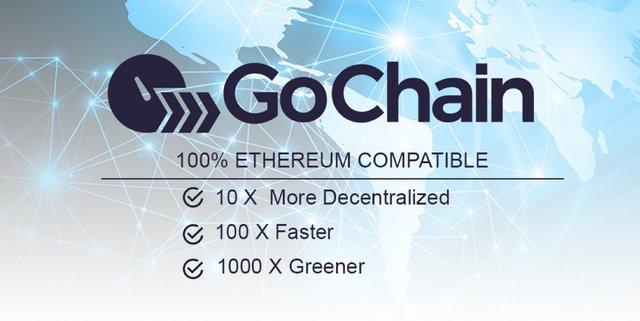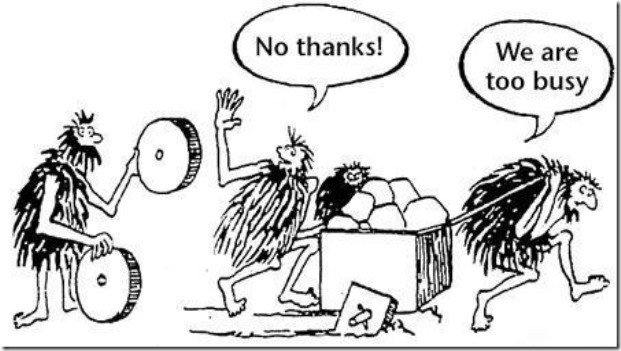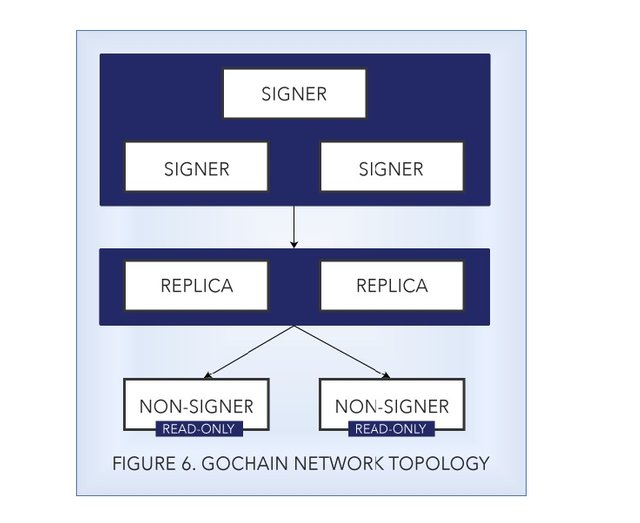GoChain-2018-The Ethereum Annihilator

Clunky, inefficient, insecure, and energy intensive are some of the words that have been used to describe the technology within the crypto space. This is especially as it relates to executing transactions. Being among the most popular and most widely used ecosystems means that Ethereum, more than most, is very susceptible to these shortcomings, for no other reason than so many other technologies are built on it. Thousands in fact.
“Vitalik Buterin, one of the founders of Ethereum, has labeled scalability a trilemma where all aforementioned problems need to be solved simultaneously.” Now, GoChain, “an Ethereum based smart contract blockchain,” has emerged to solve these problems by improving upon the current technology in a number of ways. It is seeking to do so by making transactions faster, less energy intensive, and more secure. In addition, “it enables DApp and smart contract developers to lift and shift from Ethereum to GoChain for 100x increased performance.”
A more in-depth examination of the problems within the existing system and a look at how GoChain is seeking to address them will give the reader a better sense of how groundbreaking this initiative is.
Independent Analysis of GoChain
The issue of scalability
Since the inception of cryptocurrencies, a great many people have migrated to this platform. And thousands of coins and tokens have been built on the blockchain. A side effect of this is that a lot more energy and processing speed is now required. Way more than was required at the inception of the blockchain. As such, that the current technology has not kept pace with the amount of traffic that has emerged and has continued to multiply over the past several years.
For example, “right now Ethereum can only process 13 transactions per second and as such their network is at capacity, yet it’s the industry standard.” Compare this to GoChain which is able to process up to 2,400 transactions per second, we get a sense of how revolutionary this approach is. And this is not some post ICO promise. Their beta is already performing some 1,300 transactions per second. Remember that the crypto space is not even being utilized by 1% of the population as yet. The fact that there are already issues of scalability with such a small number of users, speaks to the need for GoChain. That they have solved this problem and will continue to make improvements is a relief for the frustrated user of the present technology.
The definition of scalability, according to dictionary.com is “the ability of something, especially a computer system to adapt to increased demands.” It becomes obvious what the GoChain approach will achieve. Transactions will be faster, and more efficient. Therefore, one will not have to wait, as people do now, on transactions to take so long because the scalability issues will be solved.

Decentralization
I am not certain if the reader was as taken aback as I was to learn that the crypto world is not really decentralized. One was always under the impression that this was indeed a hallmark of the blockchain, a truism; a fact; one that was not in need of discussion or debate. To learn, however, that this is not the case is not only shocking. It is also perplexing, and might I daresay, troubling. According to the GoChain whitepaper “four companies in China account for 70-80% of all the mining activity for all the major coins/tokens including Ethereum.” Obviously, this is not decentralization. In fact, it seems as oligarchic as this present system.
Being acutely aware of this, GoChain has come up with the perfect solution. It is “changing the consensus algorithm from Proof of Work (POW) to Proof of Reputation (POR)... both of which fall under Proof of Authority (POA)]. In POA, the transactions and blocks are validated by approved accounts known as validators... whose identities are publicly disclosed and at stake.” The GoChain inspired POR is, however, a superior approach because, in this instance, the validator will not be an individual, but rather a company. This is because:
“A company with a reputation has a lot more to lose than an individual and is a much stronger deterrent to be a bad actor because the risk is much larger. A company caught cheating would not only be risking its reputation. It would be risking its entire market cap and the reputation of the officers and shareholders of the company.”
But it gets better, because GoChain will use 50 companies in over 50 countries with reputations at stake to make the blockchain truly decentralized. The promise of the blockchain was that no one group would be in control. As it is now, with so few controlling so much, we see how GoChain’s solution will be the antidote to this problem.
One foresees that this is where the blockchain will become truly decentralized. As it is now, the PRC government can shut down these sites and who knows what will happen as a result of this. Plus, there is always the possibility of price manipulation. This is what happens when so few control so much. One merely has to sift through the historical database to see that big players have always exploited their position to yield maximum rewards.

Reducing the Carbon Footprint
Energy consumption has been at the forefront of public discourse for a long time. In this ecologically fragile world, when people are seeking to reduce their carbon footprint, having cryptocurrencies consume so much energy is not a very good selling point. Take BTC for example, the last I checked, BTC mining was consuming as much energy as Ireland.
This is obscene. With coins and tokens and more people migrating to the blockchain this will just get worst. It is obvious that by designing a system that uses 1000x less energy, GoChain is steering the entire space into a greener direction. Though it is not mentioned in their whitepaper, it is not far-fetched that others will hop on board and take a similar posture and build more environmentally friendly products.
Fluidity
Another way in which GoChain will change the space is in terms of fluidity and adaptability. Being able to move code from Ethereum’s ecosystem to GoChain is a rather unique and advantageous approach. Let us employ a use-case scenario to bring this all into perspective. We will call this token NEOMI. It was recently launched on the Ethereum ecosystem. In the planning stages, they calculated that 13 transactions per second would be sufficient.
A few weeks after the product launch, investors started complaining that the system is clunky, cumbersome, and just overall inefficient. The NEOMI team found this out by following the discussions on their social media platforms. Things reached critical mass when they discovered that many investors were planning to sell off their tokens and seek alternatives.
It was on one of the threads on their Facebook page that they found out about GoChain. Realizing that they can migrate with relative ease, grabbed the attention of the team. After researching and getting testimonials from present customers. NEOMI decides that it would be a win for them to adopt an ecosystem that promises transactions that are over 1000x faster than Ethereum’s.
After a seamless shift to GoChain, the team solicited feedback from their clients who applauded the company for the marked improvement in the speed of executing transactions.
“GoChain brings to the cryptoworld the concept of Smarter, Better, Faster and Stronger blockchain.”
When we read this the first thought that comes to mind is another blockchain? do we need it specially when we have ethereum and so many projects are being built over it? or What does GoChain offer what ethereum cannot.
To answer these queries consider this
Etherium is 13 transactions per second blockchain and this makes it really slow. When so
many projects are being built on top of ethereum platform they are bound to inherit the slowness of the underlying ethereum platform and all of them try to use the available bandwidth to
carry out their own transactions. This leads to the ethereum network being overloaded and
getting even more slower.
Besides slowness of speed there are other issues as well. Ethereum works on POW or proof of
work and mining ETH requires spending a lot of energy. So to validate the transaction on the
ETH blockchain you would have to spend a lot of energy as well so the who process gets slower, energy guzzler and you are running your project on a resource that is already overburdened and over strained.

(The Current state of the ethereum blockchain)
The Gochain Advantage
So to give relief of speed, lower power consumption,better scalability comes in Gochain.
The Gochain blockchain is 100% compatible with ethereum so you can simply take your
ethereum based project and run it on the gochain blockchain without making any changes or rewriting the code.
The first thing it offers is a much faster processing speed and when your transactions get
processed at 13000 tx/sec you would be runnig your projects at 1000 times faster then while
running on the ethereum based blockchain.
Looking at the testnet results

one can clearly see that Gochain is all set to deliver what it is promising.
Addressing the issues faced by the Ethereum network
The energy required to run these transaction would be considerably lower energy consumption.
So basically the idea behind the Gochain blockchain is to solve the 3 biggest problems of
Ethereum that is
Scalibility
Decentralized
Security
Gochain offer an alternative that results in
10x more decentralization
100x increase in speed
1000x improvement in energy consumption
That too without having to rewrite or change any code.
I know this sounds a bit too good to be true solution. however if we delve a bit deeper and look at the ingenuity of the approach adopted by the Gochain network then you would see the approach to solving the biggest problems of the ethereum network are here and would become a reality in just a few months from the time I am writing this post.
A point to be noted is that 70-80% of mining activity pertaining to the cryptocurrencies is being performed by 4 companies in China. So the concept of a decentralized system is far from true in the current day scenario.
POA instead of POW
Gochain is taking a very different approach to solve these challenges
Gochain is based on proof of reputation algorithm POR instead of Proof of Work (POW). The POR approach is an advanced version of Proof of Authority (POA)
In POA the transactions are approved by approved accounts known as validators.
This concept has been used in private networks and in this model individuals are assigned to work as validators. The identities are publicly disclosed and at stake.
The reward of staking their identities and validate the transaction is a monitory incentive.
Since the identities of the validators is publicly disclosed thus it would help remove the bad actors form the system as doing something wrong would affect their reputation.
However there is a slight drawback in this system. When the value of the network grows so would be the the incentive to cheat.
to put a plug into this possible leak the proof of reputation POR users companies as validators.
Since for a company the reputation is very important.
If a company cheats its reputation gets tarnished and it loses business.
So a company has a lot more to lose if its loses reputation as compared to an individual.
To make the system even more efficient the GOchain system would use 50 companies of repute in 50 different countries.These 50 validators would work in tandem and not only validate the transaction but also keep a watchful eye on each other.
The validating nodes being present in different demographic countries would not be vulnerable to governments pulling down the entire network by compromising 51% of the nodes.
Since there is no physical mining involved in this type of validation thus this method is very energy efficient.
The selection of the validators would be initially carried out by Gochain but later on this selection process would be given to the network.

The moving to the POR model would help speed up the transactions from 13 transactions to 13000 transactions per second. This is achived by the new algorithm for transaction validation and dealing with the challenge of storage of data associated with 13000 transaction per second which amounts to 0.7 gigabyte of data per hour.
In addition offchain solutions such as Plasma and Raiden can be used to run over GoChain to make things run over Gochain and further boost the transaction speeds.
Moving to POR means no active mining involved thus this soulution is 1000 to 10,000x greener in terms of energy utilization.
The reason to feel confident about this peoject
The team behind this project consists of a development team lead by Travis Reeder who is the former founder of Iron.io.
Even Romana Kononov the former Director of Engineering of Iron.io is part of this team.
To their credit is the achievement of pioneering Serverless Cloud computing to 1 million tx per second.
Another person on the team is ben Johnson the author of Boltdb. This makes the team well equipped to solve the scaling problem of ethereum.
Their approach is to make smart contract actually smart
Gochain heralds the advent of a new smart contracts that have the ability to be changed, altered, paused and/ or terminated over time as conditions and/ or agreements change. Just as is done in the real world.
As per the Gochain project roadmap the MainNet is scheduled to be launched by the end of May 2018 Thereafter there would be a smart contract upgrades. Then the further network speed would be increase by 2018 end.
In 2019 the network would be upgraded to exceed 13000 tps or 1000X the speed of Ethereum network.
More Information & Resources:
This is a submission to the @originalworks contest here https://steemit.com/crypto/@originalworks/640-steem-sponsored-writing-contest-gochain Gochain2018
This post has been submitted for the @OriginalWorks Sponsored Writing Contest!
You can also follow @contestbot to be notified of future contests!